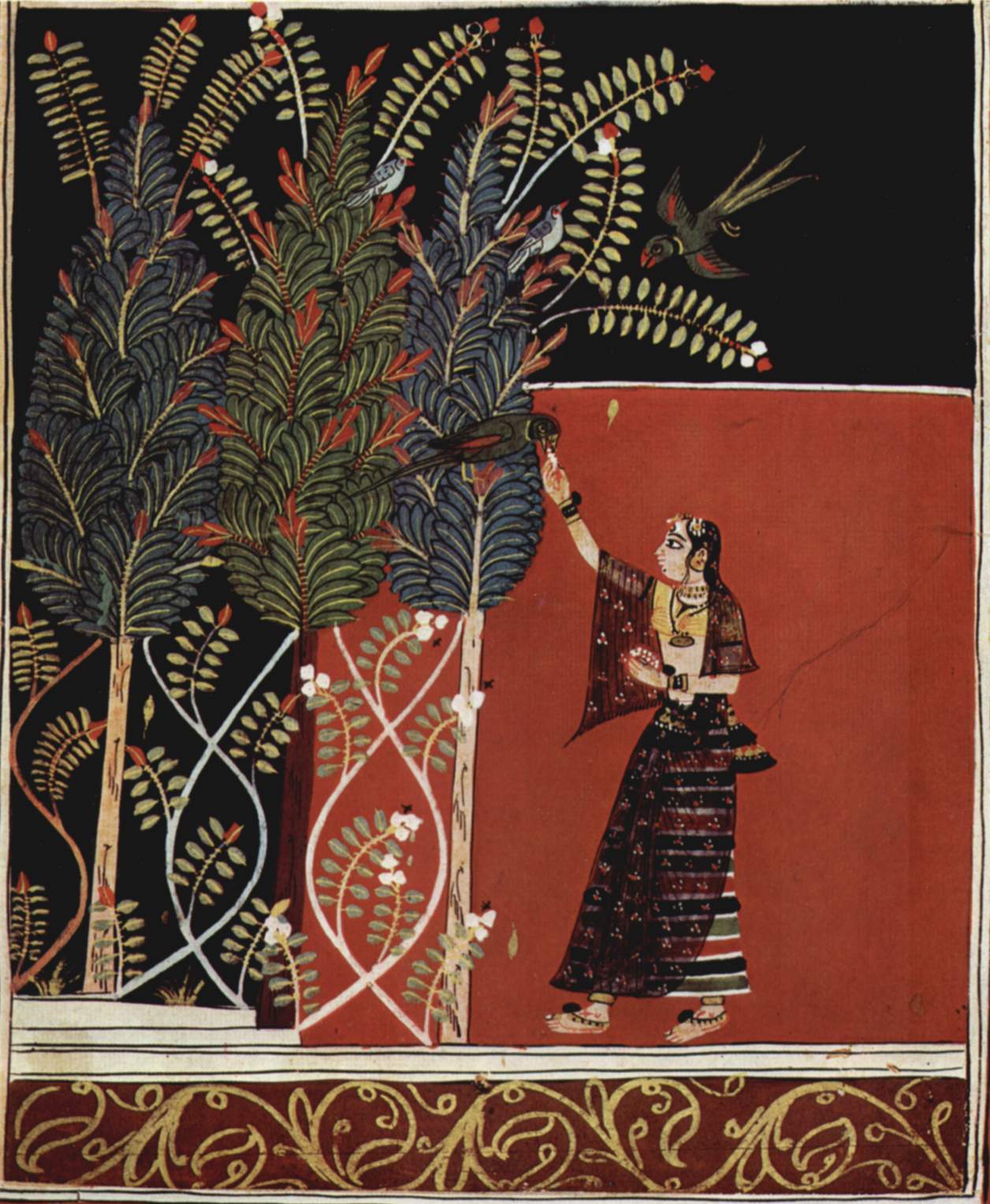Gauri (raga) on:
[Wikipedia]
[Google]
[Amazon]
 Gauri is an India musical
Gauri is an India musical
On Raga Lalita-Gouri
{{Sikh Ragas Hindustani ragas Ragas in the Guru Granth Sahib
 Gauri is an India musical
Gauri is an India musical raga
A ''raga'' or ''raag'' (; also ''raaga'' or ''ragam''; ) is a melodic framework for improvisation in Indian classical music akin to a melodic mode. The ''rāga'' is a unique and central feature of the classical Indian music tradition, and as ...
that appears in the Sikh
Sikhs ( or ; pa, ਸਿੱਖ, ' ) are people who adhere to Sikhism, Sikhism (Sikhi), a Monotheism, monotheistic religion that originated in the late 15th century in the Punjab region of the Indian subcontinent, based on the revelation of Gu ...
tradition from northern India
India, officially the Republic of India (Hindi: ), is a country in South Asia. It is the List of countries and dependencies by area, seventh-largest country by area, the List of countries and dependencies by population, second-most populous ...
and is part of the Sikh holy scripture called Sri Guru Granth Sahib
The Guru Granth Sahib ( pa, ਗੁਰੂ ਗ੍ਰੰਥ ਸਾਹਿਬ, ) is the central holy religious scripture of Sikhism, regarded by Sikhs as the final, sovereign and Guru Maneyo Granth, eternal Guru following the lineage of the Sikh gur ...
. Every raga has a strict set of rules which govern the number of notes that can be used; which notes can be used; and their interplay that has to be adhered to for the composition of a tune. there are Gouris of the Bhairav, Poorvi and Marwa thats with additional qualifiers such as the Shree-anga Gouri, Bhairav-anga Gouri, Poorvi-anga Gouri and so on. These are not considered ‘big’ ragas.
In the Guru Granth Sahib
The Guru Granth Sahib ( pa, ਗੁਰੂ ਗ੍ਰੰਥ ਸਾਹਿਬ, ) is the central holy religious scripture of Sikhism, regarded by Sikhs as the final, sovereign and Guru Maneyo Granth, eternal Guru following the lineage of the Sikh gur ...
, the Sikh holy Granth (book) there are a total of 60 raga compositions and this raga is the ninth raga to appear in the series. The composition in this raga first appear on ang (page) no. 151.
Raag Gauri (ਗਉੜੀ) – Gauri creates a mood where the listener is encouraged to strive harder in order to achieve an objective. However, the encouragement given by the Raag does not allow the ego to increase. This therefore creates the atmosphere where the listener is encouraged, but still prevented from becoming arrogant and self-important.
Gauri was used by Guru Nanak
Gurū Nānak (15 April 1469 – 22 September 1539; Gurmukhi: ਗੁਰੂ ਨਾਨਕ; pronunciation: , ), also referred to as ('father Nānak'), was the founder of Sikhism and is the first of the ten Sikh Gurus. His birth is celebrated w ...
, Guru Amar Das
Guru Amar Das ( Gurmukhi: ਗੁਰੂ ਅਮਰ ਦਾਸ, pronunciation: ; 5 May 1479 – 1 September 1574), sometimes spelled as Guru Amardas, was the third of the Ten Gurus of Sikhism and became Sikh Guru on 26 March 1552 at age 73.
Bef ...
, Guru Ram Das
Ram Das (Gurmukhi: ਗੁਰੂ ਰਾਮ ਦਾਸ, pronunciation: ; 24 September 1534 – 1 September 1581) was the fourth of the ten Gurus of Sikhism. He was born in a family based in Lahore. His birth name was Jetha, and he was ...
, Guru Arjan
Guru Arjan (Gurmukhi: ਗੁਰੂ ਅਰਜਨ, pronunciation: ; 15 April 1563 – 30 May 1606) was the first of the two Gurus martyred in the Sikh faith and the fifth of the ten total Sikh Gurus. He compiled the first official edition of ...
and Guru Tegh Bahadur
Guru Tegh Bahadur (Punjabi: ਗੁਰੂ ਤੇਗ਼ ਬਹਾਦਰ (Gurmukhi); ; 1 April 1621 – 11 November 1675) was the ninth of ten Gurus who founded the Sikh religion and the leader of Sikhs from 1665 until his beheading in 1675. ...
. Several forms of Gauri Raga exist historically and this probably accounts for the large number of variants:
* Gauri (Bhairav thaat)
* Gauri (Kalingada aang) (2 M's)
* Gauri (Marwa aang)
* Gauri Bairagan
* Gauri Basant
* Gauri Chayti
* Gauri Cheti
* Gauri Dakhani
* Gauri Deepaki
* Gauri Guarairi
* Gauri Majh
* Gauri Mala
* Gauri Malva
* Gauri Purbi
* Gauri Purbi Deepaki
* Gauri Sorath
Composition of the raga
* Aroh: Sa Re Ga Re Ma Pa Ni Sa * Avroh: Sa Ni Dha Ma Pa, Dha Pa Ma Ga, Ga Re Sa Ni Sa * Vadi: Re * Samvadi: Pa Occasionally Re is performed with a vibrate as in Siri Raga which has the same vadis. Ni is given prominence through either stopping or lingering on this note. This raga is associated with Bhairav thaat. But it is played in various angs (forms) : * Gauri (Bhairav thaat) * Gauri (Kalingada aang) (2 M's) * Gauri (Marwa aang).See also
* List of Ragas in Hindustani classical music *Kirtan
Kirtana ( sa, कीर्तन; ), also rendered as Kirtan, is a Sanskrit word that means "narrating, reciting, telling, describing" of an idea or story, specifically in Indian religions. It also refers to a genre of religious performance art ...
* Sukhmani Sahib
Sukhmani Sahib ( pa, ਸੁਖਮਨੀ ਸਾਹਿਬ) is usually translated to mean ''Prayer of Peace'' is a set of 192 '' padas'' (stanzas of 10 hymns) present in the holy ''Guru Granth Sahib'', the main scripture and living Guru of Sikhism ...
References
External links
On Raga Lalita-Gouri
{{Sikh Ragas Hindustani ragas Ragas in the Guru Granth Sahib